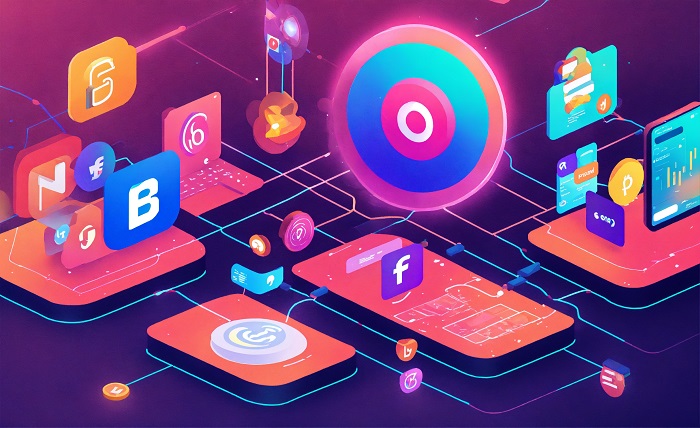How Facial Recognition Technology Is Reshaping Online Identity Verification

In today’s digital-first world, verifying who you are online is just as important as verifying your identity in real life. From accessing secure systems to unlocking phones and even boarding flights, biometric verification is rapidly becoming the norm — and at the heart of it all lies facial recognition technology.
What started as a futuristic concept is now a practical, everyday tool used across industries. From gaming and entertainment platforms to financial services and government systems, face-based authentication is making identity verification faster, safer, and smarter.
The Shift from Passwords to Facial Biometrics
For years, passwords and security questions have been the standard for verifying online identities. However, these methods are not only inconvenient but also vulnerable to hacking and social engineering. Facial recognition technology offers a seamless alternative by using each person’s unique facial features as a secure authentication method.
Platforms across various sectors — including Highroller, the exclusive, high-end online casino — are investing in technologies that strengthen user protection through smarter verification protocols, helping ensure that only authorized users gain access.
Biometrics like facial recognition remove the need to remember complicated passwords. Instead, a quick scan is all it takes. As artificial intelligence (AI) and machine learning improve facial detection accuracy, these systems are becoming more reliable, even in varied lighting conditions or with changes in appearance.
Where Facial Recognition Is Making the Biggest Impact
While airports and border security have been early adopters, the technology’s reach is quickly expanding:
- Financial Services
Banks and fintech apps are implementing facial recognition to enhance login security and verify customer identities during account setup. This not only deters fraud but also improves user onboarding by reducing the need for in-person identity checks. - E-Commerce & Digital Transactions
Online retailers and digital marketplaces now use face verification to prevent unauthorized transactions. It acts as an additional authentication layer during checkout, helping to stop identity theft and ensure secure transactions. - Healthcare Access
Medical records and patient data are among the most sensitive types of information online. Hospitals and digital health platforms are using facial authentication to limit access only to verified professionals and patients, safeguarding data while streamlining access. - Smart Devices and IoT
From smartphones to smart homes, facial recognition is deeply embedded in how we interact with technology. Whether unlocking your phone or accessing a secure system at work, facial biometrics are now an everyday interface between humans and machines.
Accuracy, Bias, and Privacy: The Balancing Act
One of the most pressing concerns around facial recognition is bias. Several studies have shown that some systems perform less accurately across different skin tones, genders, and age groups. This has prompted calls for stricter auditing, better training datasets, and more transparency in how AI models are built.
Privacy is another critical consideration. Facial data is biometric and uniquely identifiable, which makes improper storage or sharing a serious issue. Ethical use of facial recognition requires platforms to adhere to privacy-first policies, including:
- Storing encrypted biometric data securely
- Providing clear user consent options
- Offering opt-out alternatives for those uncomfortable with facial scanning
As more platforms adopt this technology, privacy watchdogs and standards organizations are also stepping in. Groups like the National Institute of Standards and Technology (NIST) are helping shape regulations and testing protocols to ensure systems are both accurate and fair. Click here to visit the NIST Face Recognition Program
How AI Is Enhancing Verification Systems
Modern facial recognition relies on deep learning — a subset of AI that trains systems to detect and verify facial features through massive datasets. These systems analyze a face in real time and compare it against stored templates, all in a matter of seconds.
AI is also improving liveness detection, a key feature that ensures a real person is in front of the camera and not a photo or video. This helps eliminate spoofing attempts and keeps systems secure.
As edge computing advances, facial verification can now happen directly on users’ devices, minimizing data transfer and further strengthening privacy. These improvements are making the tech faster, more efficient, and less intrusive.
The Role of Facial Recognition in Digital Trust
Digital platforms are under constant pressure to maintain trust. Whether it’s protecting financial data or safeguarding entertainment experiences, users want to know their information is secure.
Facial recognition helps establish that trust by offering a smoother yet more secure login and identity verification experience. It ensures that individuals are who they say they are, without requiring complex or manual steps.
When done responsibly, facial authentication enhances user confidence and drives higher engagement across digital ecosystems. For example, platforms like Highroller, the exclusive, high-end online casino integrate secure access features that reflect a commitment to digital safety and premium user experience.
Future Outlook: Responsible Growth and Widespread Adoption
With growing adoption, regulatory frameworks will continue to evolve. Expect to see more global standards for facial data protection, better algorithms trained on diverse datasets, and wider opt-in options for users.
As facial recognition becomes mainstream, businesses will need to balance security with user experience, ensuring systems are easy to use but hard to exploit. Investing in ethical AI, prioritizing data transparency, and involving users in privacy choices will be crucial.




